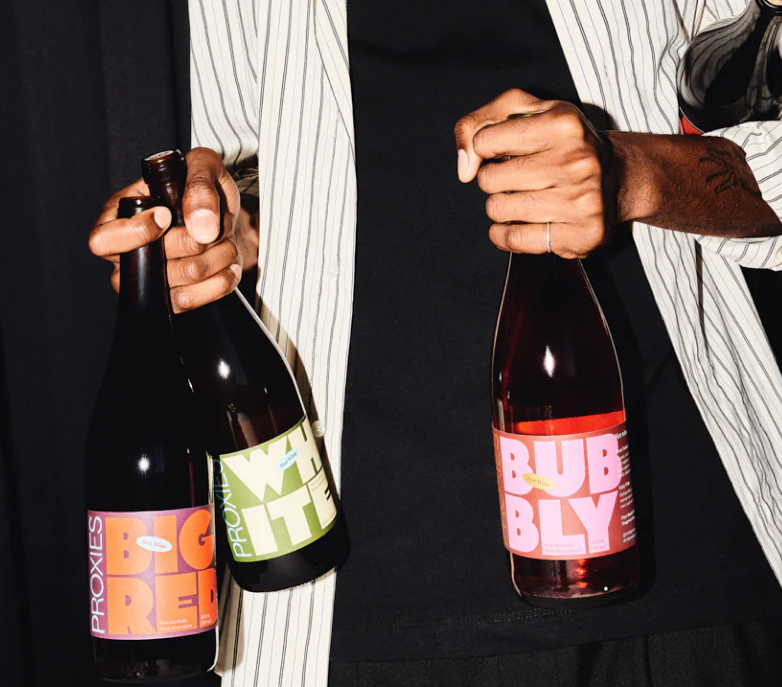
Grocer Girl
Share
Emily Schildt is very particular when it comes to choosing products for Pop Up Grocer, the traveling grocery store she founded to showcase innovative food and beverage brands.
If the product isn’t interesting to Schildt, it doesn’t make it to the shelves. “Are they creating products with a new ingredient? Are they taking an old and familiar ingredient and pushing it in a new way or new format?” Schildt says from Austin, Texas, where she’s getting set to launch her latest pop up shop, after successful stints in New York and Los Angeles.
Here, Schildt shares more of what she looks for when stocking the shelves at Pop Up Grocer.

Ingredients
The main ingredient in Lupii’s power bars is the Lupini bean, a legume traditionally eaten in North Africa and the Mediterranean as a pickled snack food.
The idea of a more global pantry is very exciting—the idea of lupini beans or pili nuts making their way into the mainstream, into everyday life indicates an open-mindedness and a curiosity that is far-reaching. Much beyond just people’s dinner plates. What would be unfortunate or wrong even, is if the people, culture, and the history of the ingredient weren’t learned in the process. It’s the responsibility of the makers to educate the end consumer.

Education
Better Booch stands out for its focus on education—teaching consumers about sustainability and ingredient sourcing, as well as the health benefits of its kombucha.
I think if you have such a high standard for your ingredients and your quality and you have such interesting elements to your story, it’s a necessity. You have to have communications around the advantages of purchasing your product over one that’s lesser made and probably has a lesser price point. You have to help people understand why they’re making that choice.

Emotion
Woah Dough!’s cookie dough snack bars offer a delicious reminder of childhood indulgence.
I’ve never thought about how Woah Dough! is really playing into my childhood, but it is. It speaks to what’s happening culturally right now. We’re—I don’t want to say we’re all sad—I think we’re all looking for ways to escape reality, to find joy, to find pleasure, and maybe return to some of the good memories of our childhood. We’ve seen that trending for some time. The most successful products in our store are those that I would consider ‘better for you indulgences.’ The things that people have always wanted to eat—pasta, ice cream—but just made in a way that makes them feel a little bit better about eating it regularly.
Art & Design
Los Angeles based food and art magazine Compound Butter’s bold design and focus on the intersection of food, art, and culture serves as a model for modern food brands.
Compound Butter manifests where we think CPG should be. The direction it should be going in as far as an emphasis on design, but also merging cool with food. For a lot of the brands we work with, there’s such an emphasis on quality and benefit. That’s your classic CPG marketing strategy—help people understand how your ingredients are going to make them feel, or what nutritional value they provide. There’s not a whole lot of emotional connection.
Healthy is the standard. Everybody wants to eat better, that’s just like a thing. So what’s important for these brands to do is look at themselves as a brand and say, what am I offering above and beyond that, who are we, why would people be investing in us, why would people line their shelves with us? That’s where you come up with a brand. Compound Butter has really been looking at this intersection of food and trends, which is often where you can look to develop your brand. It’s a good representation of where there’s still a lot of work to be done among small food brands.

Community
Overnight oatmeal company Mush matched every order in May of this year with donations to Feeding America, Ruby’s Pantry, and first responders in Florida.
I think food brands have a responsibility to give back. I think businesses have a responsibility. With Pop Up Grocer, we donated 5% of our in-store sales since our very first store. Before we even knew that there were sales to support that commitment. Giving back should be worked into your business model from day one. In terms of food brands having the responsibility to give back to food-related organizations, I don’t really have an opinion there. I think you can give back in whatever way feels right to your core values. To your commitment to your consumers, to the things that they care about. Speaking specifically during this time and to the Mush example, it’s been really wonderful to see. If you have the means, if you’re generating revenue, then you need to give a portion of that back somewhere.
A version of this article originally appeared in Acid League Magazine Volume 1.





